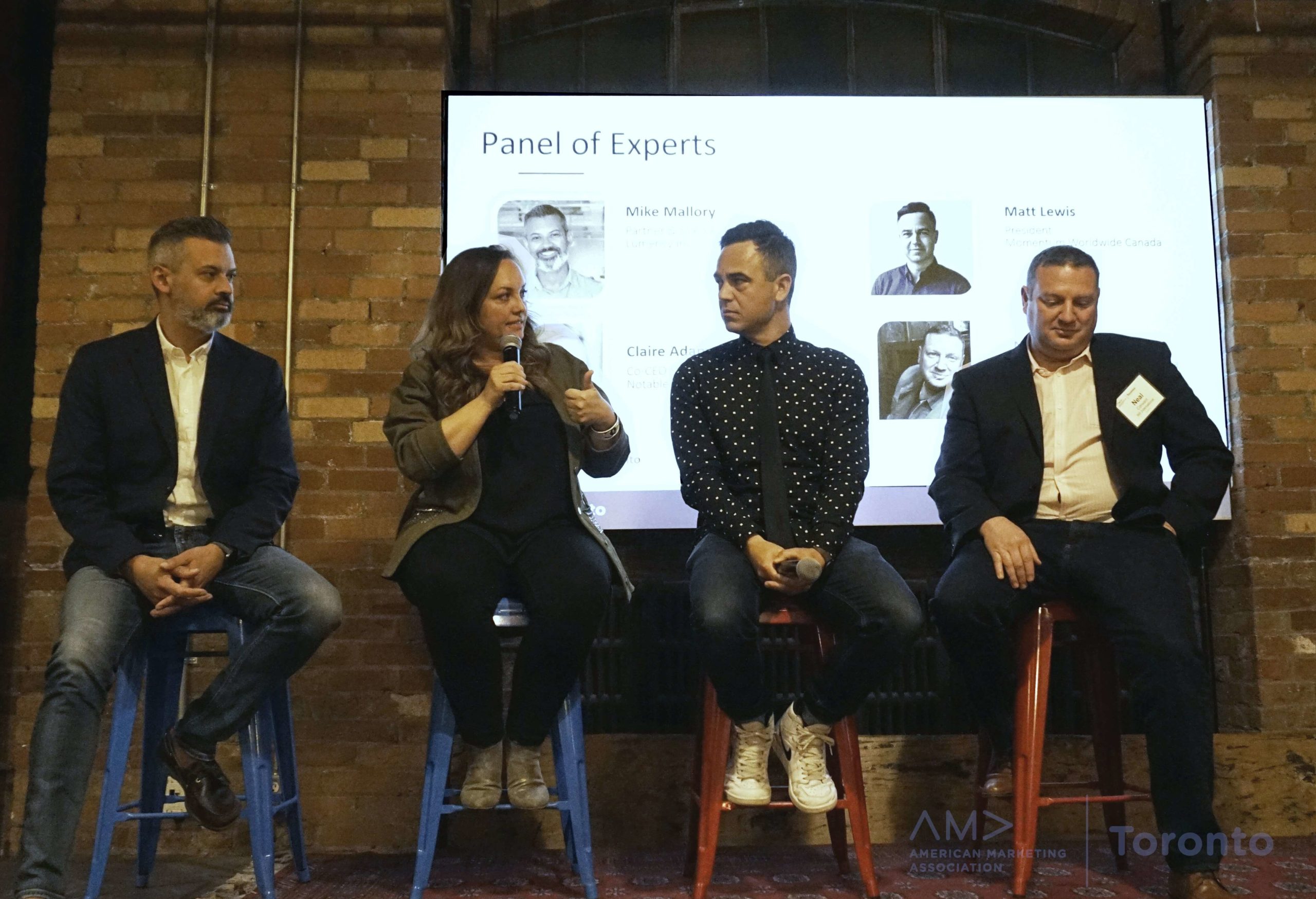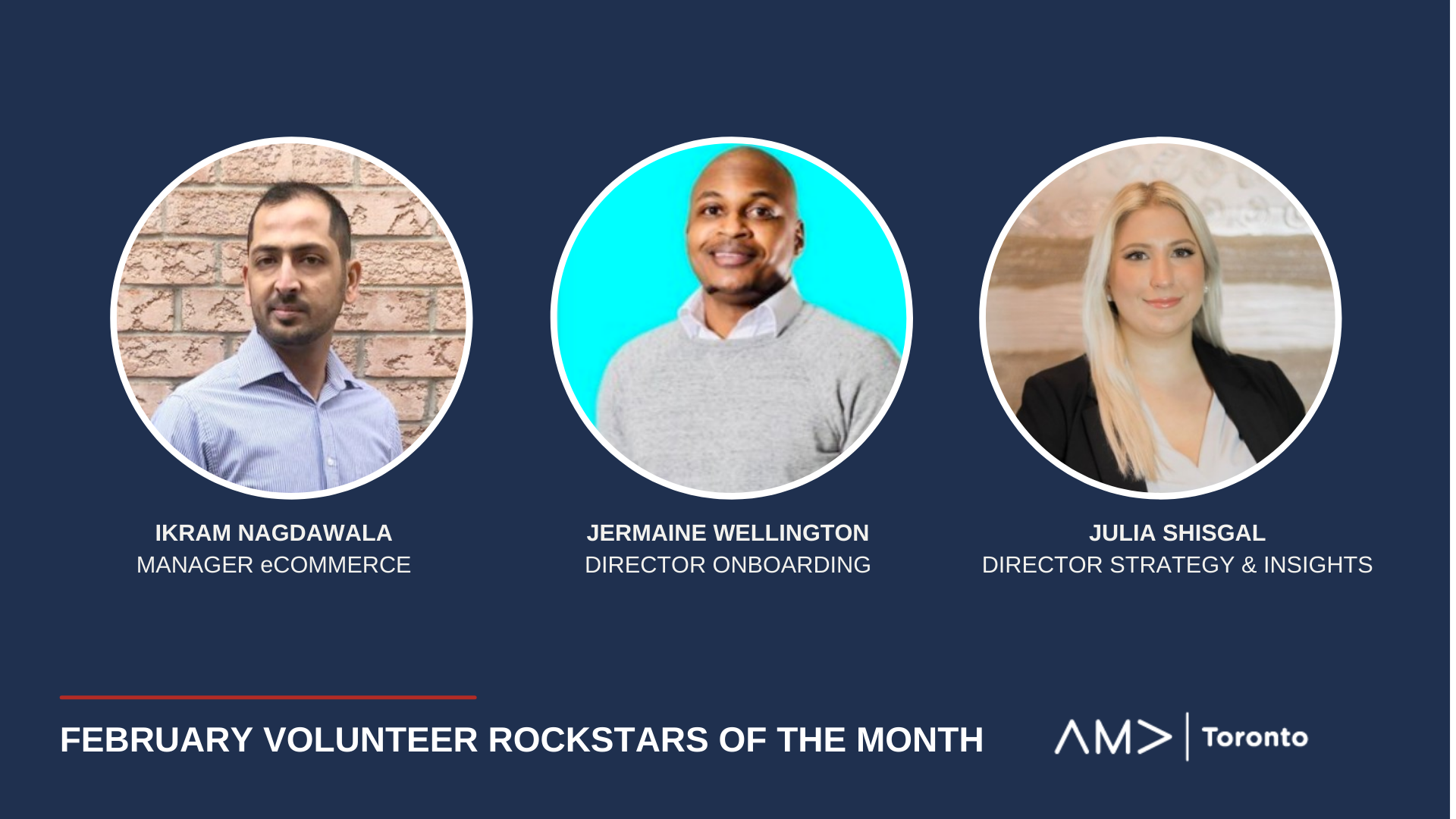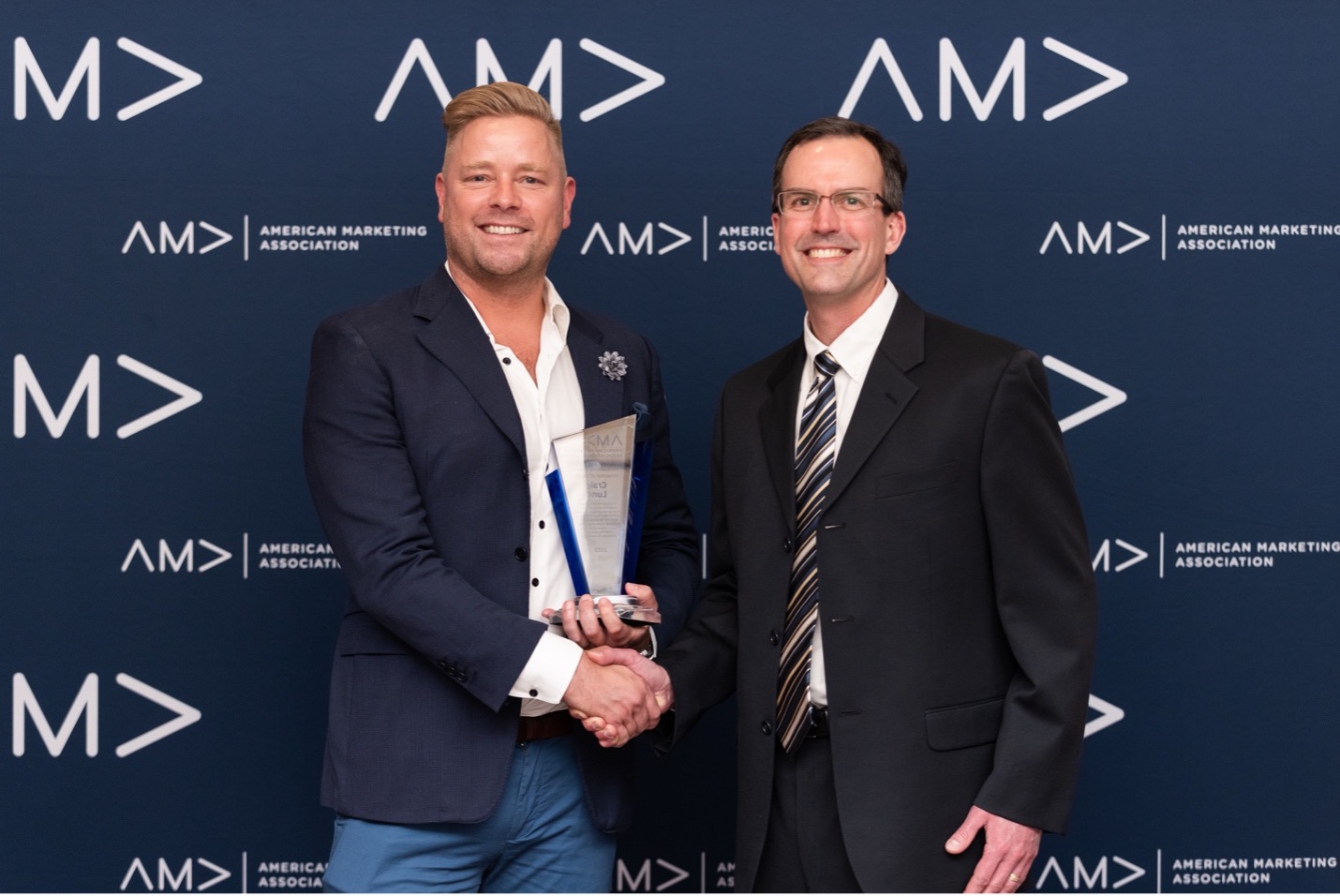Making Moments That Matter: Event Highlights from AMA-Toronto’s “Influence Consumers with Experiential Marketing”
Hosted in the wonderful Centre For Social Innovation space in Toronto’s Annex neighbourhood, Influence Consumers with Experiential Marketing brought together a diverse panel of experts for an engaging evening of insights as they discussed the value, risks, and real impacts of experiential marketing. Leading the discussion were Neal Covant (VP, Client Service, North America, IMI International), Mike Mallory (Partner & SVP, Client Service, Lumency Inc.), Matt Lewis (President of Momentum Worldwide Canada), and Claire Adams (Co-CEO & Principal Notable Life Media Group, Inc.)https://www.youtube.com/embed/Y_1W54ZRaIM
Make it authentic
Neal Covant (VP, Client Service, North America, IMI International) presented first, talking about how to quantify the impact of experiential marketing. Fifty-two percent (52%) of consumers in North America find experiential marketing the most activating kind of marketing. “When it’s done right,” Covant was quick to add. And that comes down to authenticity. “If you’re not making an authentic connection, you’re not making an impact,” Covant said. “Authentic connection is the point of entry.” It’s not enough for your brand to be seen at an event where people are having fun. Best-in-class activation happens when your brand celebrates an event, extending and enhancing the consumer’s experience. And Covant emphasized that it was quality of interactions, not quantity, that leads to the most success. He suggested focusing on the two or three things you’re best at and which are having the most success and doing those. Stick to what’s simple, relevant, and motivational. “Otherwise, the good stuff gets lost,” he said.
Creating moments
Mike Mallory (Partner & SVP, Client Service, Lumency Inc.), who spoke about the value and importance of creating moments. “Focus less on experiences and more on moments,” he suggested. “They stay with you more, and change and drive behaviour better.” He emphasized the role of human behaviour and memory, and how powerful moments are recalled for how they made us feel, and not for what they made us think. That’s why he focuses on creating moments that will provide powerful opportunities to influence people’s behaviour. He pointed out key drivers of powerful moments include storytelling, choice, and social interaction (both in community and online), but that a person’s mindset was also vital. You need to meet people when they are in the right mindset to be approached, otherwise, there’s no chance for connection. He echoed the idea that you need to enhance an experience, not interrupt it with a brand. Instead, your brand needs to be a “super fan” of an event, idea, or cause, believing passionately and authentically in what a real fan believes, in order to create a genuine connection with people.
The impact of experiences
Matt Lewis (President of Momentum Worldwide Canada) spoke about the impact of experiences, arguing that experiences should be the lens through which you create and evaluate your ideas. “It’s what brands do that matters,” Lewis said. But, he cautioned, experiences are not simply events. Rather, experiential marketing is the proof points of a brand’s purpose, and how the best brands embed themselves with what matters most to people. He noted that over the last five years consumers have moved from looking for brands that made their lives easier to wanting brands that make their lives better. Today’s brands have to inspire, make you feel better, and help eliminate anxiety. He also emphasized that while in isolation experiential marketing can be expensive, when taken as a whole over time it is incredibly powerful in effect.
Feeling–not things–connect with consumers
And Claire Adams (Co-CEO & Principal Notable Life Media Group, Inc.) drew on her unique background in television and theatre production to encourage marketers to think like TV producers do by creating based on what emotion they want to elicit. She suggested looking to the model of pop songs for tools to create powerful, memorable moments that stick with people:
• Use simple, clear language
• Use multiple voices, multiple perspectives
• Be orderly. Follow a linear progression.
• Use repetition, repetition, repetition to create a pattern of permanence
The result, she promises, will be joy and connection. And it is joy, she argued, that creates an experience. Joy, she explained, is an immediate rush, and immediate peak, unlike happiness, which is long-term well being. It is these peak emotions that TV producers aim to make their audiences feel, and she suggested that marketers can use the same tactics to create the environment for magical, emotional moments to happen. It’s feelings, not things, that convert consumers. “If you build emotion with experiential marketing,” Adams said, “the rest of the traditional tactics can follow.”
* * *
Join AMA-Toronto’s next event, the Annual CMO Breakfast, on June 12th, at Loyalty One (351 King St E, Suite 200). AMA Toronto’s annual CMO series brings together leading marketing executives for a town hall conversation about the state of marketing. For more details visit the AMA-Toronto Events page.
This article was brought to you through the partnership between the AMA-Toronto and HeadStart Copywriting.




